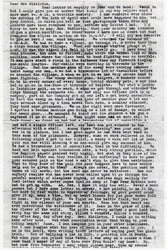Thiepval Memorial
Memorial to the Missing of the Somme
Roll of Honour
M
Dedications
G/2386 William Frederick Manton, 12th Bn., Middlesex Regiment, 14th July 1916. Pier and Face 12 D and 13 B.
William was killed in action on the 14th of July 1916 for the Battle of Trones wood. In civilian life he was a wireman on the trams and came from Peckham London.
Remembered by his Great grandson Mark Thomas Walker
G/2386 William Frederick Manton, 12th Bn., Middlesex Regiment, 14th July 1916. Pier and Face 12 D and 13 B.
William was killed in action on the 14th of July 1916 for the Battle of Trones wood. In civilian life he was a wireman on the trams and came from Peckham London.
Remembered by his Great grandson Mark Thomas Walker
2326 Rifleman John Joseph Meehan, 1st Bn. Royal Irish Rifles, 1st July 1916, aged 20. Pier and Face 15 A and 15 B. Son of Charles Henry and Catherine Meehan, of 17, King's Avenue, Ballybough Rd., Dublin.
Remembered by his Great niece Susan Stone

Lieutenant
Thomson Sinclair Mackie
3rd Bn. attd. 8th Bn. North Staffordshire Regiment
18th November 1916, aged 29.
Pier and Face 14 B and 14 C.
Son of Mr. and Mrs. William Mackie, of Culloden, Inverness. 1st Hons. M.A. Graduate of Edinburgh University.
Picture courtesy of Glynis Tuke
Thomson Sinclair Mackie
3rd Bn. attd. 8th Bn. North Staffordshire Regiment
18th November 1916, aged 29.
Pier and Face 14 B and 14 C.
Son of Mr. and Mrs. William Mackie, of Culloden, Inverness. 1st Hons. M.A. Graduate of Edinburgh University.
Picture courtesy of Glynis Tuke
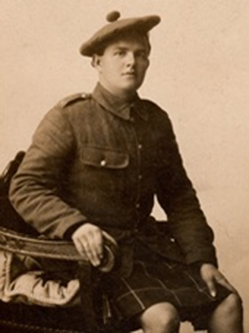
S/2967 Private
John Malcolm
"C" Coy. 7th Bn. Seaforth Highlanders
15th July 1916, aged 25.
Pier and Face 15 C.
Son of Mr. and Mrs. William Malcolm, of 46, Coach Rd., Wick, Caithness.
He was born in Wick, Caithness on 16th March 1891.
He was the son of William and Jane Malcolm (nee Mackenzie) of 46 Coach Road, Wick, Caithness. His father William was a gas stoker. They had three children: John Malcolm (b. 1891) , Jane Cormack Malcolm (b. 1892) who was my grandmother and William Malcolm (b. 1900)
John Malcolm Enlisted at Wick, Caithness and went to France on 10th May 1915.
My father, Alexander John Malcom Mackay MBE, DFC, was his nephew and was named after him.
Picture courtesy of Jane Mickelborough, great niece.
John Malcolm
"C" Coy. 7th Bn. Seaforth Highlanders
15th July 1916, aged 25.
Pier and Face 15 C.
Son of Mr. and Mrs. William Malcolm, of 46, Coach Rd., Wick, Caithness.
He was born in Wick, Caithness on 16th March 1891.
He was the son of William and Jane Malcolm (nee Mackenzie) of 46 Coach Road, Wick, Caithness. His father William was a gas stoker. They had three children: John Malcolm (b. 1891) , Jane Cormack Malcolm (b. 1892) who was my grandmother and William Malcolm (b. 1900)
John Malcolm Enlisted at Wick, Caithness and went to France on 10th May 1915.
My father, Alexander John Malcom Mackay MBE, DFC, was his nephew and was named after him.
Picture courtesy of Jane Mickelborough, great niece.
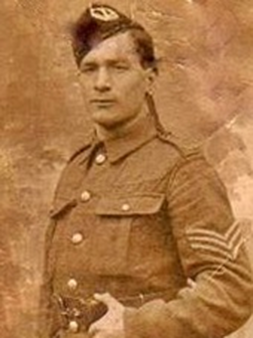
5330 Serjeant
Charles Marsh
5th Bn. Gordon Highlanders
13th November 1916.
Pier and Face 15 B and 15 C.
"Remembered with Honour"
Picture courtesy of Tony Rob
Charles Marsh
5th Bn. Gordon Highlanders
13th November 1916.
Pier and Face 15 B and 15 C.
"Remembered with Honour"
Picture courtesy of Tony Rob
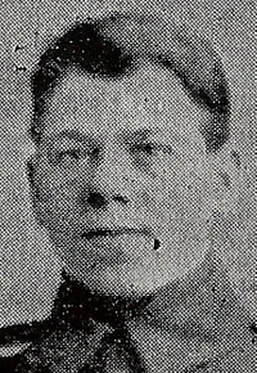
23599 Private
George William Marsh
15th Bn. Sherwood Foresters (Notts and Derby Regiment)
17th July 1916, aged 20.
Pier and Face 10 C 10 D and 11 A.
Son of Linney Marsh who later married Thomas Yates.
At the age of 14 George William was working as a brickyard labourer at the Bentink Colliery, Kirkby-in-Ashfield but prior to enlistment he worked as a miner at the Silverhill Colliery.
After early training near home, the units concentrated in June 1915 in North Yorkshire. Divisional HQ was at Masham and units were at Roomer Common, Marfield, Fearby and Masham. In August 1915 the Division moved to Salisbury Plain, HQ being set up at Marlborough. Over the next few weeks moves were made to Chiseldon and Cholderton. In late 1915 orders were received to kit for a move to Egypt but this was soon rescinded and the battalions were ordered to France.
On the 16th July 1916 the battalion relieved the 6th Northamptonshire Regiment in trenches S.E. of Trones Wood to immediately west on Maltz Horn Farm. The 16th Cheshires were on their left flank and the 7th Buffs on their right flank.
The war diary states that:-
17th – Took over trenches from 7th Buffs and joined up with the French on our right
19th – Rather heavily bombarded, subjected to tear gas and gas shells
20th – W & Z Coys attacked enemy’s position in conjunction with French attack on our right at 5am. Unsuccesful, casualties heavy. 23rd Manchester Regiment assisted
George William Marsh was my uncle. His brother Robert Henry Marsh of the 10th Battalion Sherwood Foresters (Notts and Derby Regiment) also fell and is remembered on the Thiepval Memorial to the Missing. (Picture Below)
Remembered by Lynne Weston
George William Marsh
15th Bn. Sherwood Foresters (Notts and Derby Regiment)
17th July 1916, aged 20.
Pier and Face 10 C 10 D and 11 A.
Son of Linney Marsh who later married Thomas Yates.
At the age of 14 George William was working as a brickyard labourer at the Bentink Colliery, Kirkby-in-Ashfield but prior to enlistment he worked as a miner at the Silverhill Colliery.
After early training near home, the units concentrated in June 1915 in North Yorkshire. Divisional HQ was at Masham and units were at Roomer Common, Marfield, Fearby and Masham. In August 1915 the Division moved to Salisbury Plain, HQ being set up at Marlborough. Over the next few weeks moves were made to Chiseldon and Cholderton. In late 1915 orders were received to kit for a move to Egypt but this was soon rescinded and the battalions were ordered to France.
On the 16th July 1916 the battalion relieved the 6th Northamptonshire Regiment in trenches S.E. of Trones Wood to immediately west on Maltz Horn Farm. The 16th Cheshires were on their left flank and the 7th Buffs on their right flank.
The war diary states that:-
17th – Took over trenches from 7th Buffs and joined up with the French on our right
19th – Rather heavily bombarded, subjected to tear gas and gas shells
20th – W & Z Coys attacked enemy’s position in conjunction with French attack on our right at 5am. Unsuccesful, casualties heavy. 23rd Manchester Regiment assisted
George William Marsh was my uncle. His brother Robert Henry Marsh of the 10th Battalion Sherwood Foresters (Notts and Derby Regiment) also fell and is remembered on the Thiepval Memorial to the Missing. (Picture Below)
Remembered by Lynne Weston

15362 Private
Robert Henry Marsh
10th Bn. Sherwood Foresters, (Notts and Derby Regiment)
7th July 1916, aged 23.
Pier and Face 10 C 10 D
Son of Thomas and Linda Yates, of 6, Spring Hill, Sutton-in-Ashfield, Nottingham. His brother William also fell.
Robert Henry Marsh (Bob) was born on 22nd December 1894 at 9 Lord Street, Sutton-in-Ashfield, the son of Linney Marsh. Bob was working as a brickyard labourer, at the Bentink Colliery before enlisting with the Sherwood Foresters during late 1914.
After initial training close to home they moved to Wool then to West Lulworth in October and back to Wool in December. At the end of April 1915 the battalion packed up and said goodbye to the peace of Lulworth Cove. They marched for five days, bivouacking over night at Bovington, Cranborough Park (a wood near Ringwood) and in fields around Totton, Southampton. Their destination, Flowerdown Camp near Winchester, was reached on 30th May 1915 where they did their final training.
The Division had originally been chosen to remain in Britain to meet a possible German invasion of the east coast but there was a sudden change of plan at the War Office and orders were received to embark for France to join the British Expeditionary Forces.
Robert was in the thick of fighting at Ypres, The Ypres Salient and around Contalmaison. The Sherwood Foresters Roll records that he was ‘killed in action when in the attack on Quadrangle Support near Contalmaison, France’ on 7th July 1916. He was just 21 years old.
Robert Henry Marsh was my uncle. His brother George William Marsh of the 15th Battalion Sherwood Foresters (Notts and Derby Regiment) also fell and is remembered on the Thiepval Memorial to the Missing. (Picture above)
Remembered by Lynne Weston
Robert Henry Marsh
10th Bn. Sherwood Foresters, (Notts and Derby Regiment)
7th July 1916, aged 23.
Pier and Face 10 C 10 D
Son of Thomas and Linda Yates, of 6, Spring Hill, Sutton-in-Ashfield, Nottingham. His brother William also fell.
Robert Henry Marsh (Bob) was born on 22nd December 1894 at 9 Lord Street, Sutton-in-Ashfield, the son of Linney Marsh. Bob was working as a brickyard labourer, at the Bentink Colliery before enlisting with the Sherwood Foresters during late 1914.
After initial training close to home they moved to Wool then to West Lulworth in October and back to Wool in December. At the end of April 1915 the battalion packed up and said goodbye to the peace of Lulworth Cove. They marched for five days, bivouacking over night at Bovington, Cranborough Park (a wood near Ringwood) and in fields around Totton, Southampton. Their destination, Flowerdown Camp near Winchester, was reached on 30th May 1915 where they did their final training.
The Division had originally been chosen to remain in Britain to meet a possible German invasion of the east coast but there was a sudden change of plan at the War Office and orders were received to embark for France to join the British Expeditionary Forces.
Robert was in the thick of fighting at Ypres, The Ypres Salient and around Contalmaison. The Sherwood Foresters Roll records that he was ‘killed in action when in the attack on Quadrangle Support near Contalmaison, France’ on 7th July 1916. He was just 21 years old.
Robert Henry Marsh was my uncle. His brother George William Marsh of the 15th Battalion Sherwood Foresters (Notts and Derby Regiment) also fell and is remembered on the Thiepval Memorial to the Missing. (Picture above)
Remembered by Lynne Weston
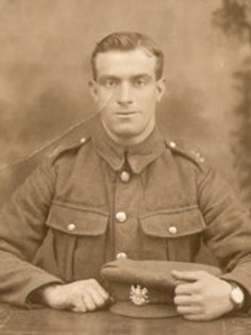
Private 17131
Samuel Marshall
1st Bn. King's Own (Royal Lancaster Regiment)
1st July 1916.
Pier and Face 5 D and 12 B.
Picture courtesy of Jackie Marshall, great, great niece
Samuel Marshall
1st Bn. King's Own (Royal Lancaster Regiment)
1st July 1916.
Pier and Face 5 D and 12 B.
Picture courtesy of Jackie Marshall, great, great niece
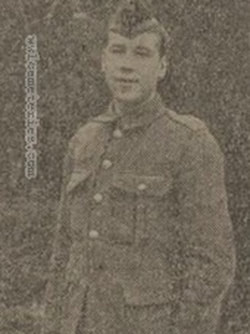
2322 Lance Corporal
Robert Mason
1st Bn. Black Watch (Royal Highlanders)
14th July 1916.
Pier and Face 10 A.
Robert Mason
1st Bn. Black Watch (Royal Highlanders)
14th July 1916.
Pier and Face 10 A.
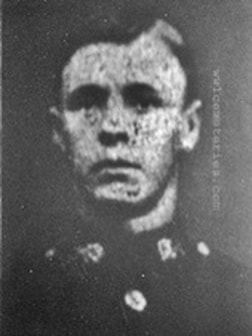
10028 Private
John McConville
1st Bn. King's Own (Royal Lancaster Regiment)
23rd October 1916.
Pier and Face 5 D and 12 B.
Lived at 8 Ardwick Street, Burnley, Lancashire.
John McConville
1st Bn. King's Own (Royal Lancaster Regiment)
23rd October 1916.
Pier and Face 5 D and 12 B.
Lived at 8 Ardwick Street, Burnley, Lancashire.
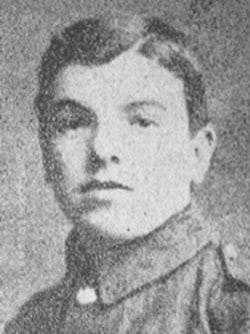
5181 Private
Andrew McNab
2nd Bn. East Lancashire Regiment
8th November 1916, aged 25.
Pier and Face 6 C.
Lived at 25 Wynotham Street, Burnley, Lancashire.
Son of Alexander and Janet McNab, of 75, Barden Lane, Burnley.
Andrew McNab
2nd Bn. East Lancashire Regiment
8th November 1916, aged 25.
Pier and Face 6 C.
Lived at 25 Wynotham Street, Burnley, Lancashire.
Son of Alexander and Janet McNab, of 75, Barden Lane, Burnley.
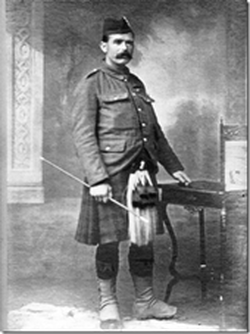
S/8806 Lance Corporal
William Rollo Meldrum M. M.
8th Bn. Black Watch (Royal Highlanders)
18th July 1916.
Pier and Face 10 A.
He was born Airlie, Forfar on the 1st October 1883, Son of David and Margaret (Smith) Meldrum.
Remembered by Iris McKeracher
William Rollo Meldrum M. M.
8th Bn. Black Watch (Royal Highlanders)
18th July 1916.
Pier and Face 10 A.
He was born Airlie, Forfar on the 1st October 1883, Son of David and Margaret (Smith) Meldrum.
Remembered by Iris McKeracher
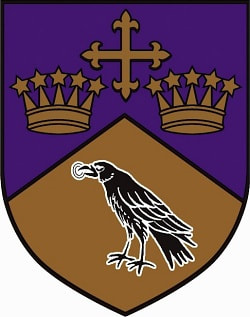
R/23951 Rifleman
Edward Rupert Menlow Jenkins Menlove
2nd Bn. King's Royal Rifle Corps
9th September 1916, aged 31.
Pier and Face 13 A and 13 B.
The information below supplied by 'The Ellesmerian Club', the alumni organisation for Ellesmere College where Edward was a pupil.
Edward Rupert Menlow Jenkins Menlove
2nd Bn. King's Royal Rifle Corps
9th September 1916, aged 31.
Pier and Face 13 A and 13 B.
The information below supplied by 'The Ellesmerian Club', the alumni organisation for Ellesmere College where Edward was a pupil.
Edward Rupert Menlow Jenkins Menlove, the only son of the Reverend John Jenkins and his wife, Lucy, was born on 14th November 1884 when his father was incumbent at Hirnant Rectory, near Oswestry, Shropshire. He had one elder sister, Lucy and a younger sister, Alathea, was born in 1885. Edward was home tutored prior to his arrival at Ellesmere College on 18th September 1896 where he joined forty one other new boys starting their academic careers there.
He was allocated to the ‘Gordon’ dormitory and started in Form Lower I under the instruction of Mr. F. W. Evans. By the time he left in July 1904, he had progressed through all the academic years and was a member of the 6th form. He was known to all as ‘Massa’. In June 1903, he set a ‘record’ as he became the pupil who had boarded the longest at the college longer since it opened in 1884.
On the academic side of college life, he started as he meant to go on. The School Inspectorate, in their report on Religious Knowledge teaching in 1897, stated that “in Lower II Jenkins (with 98%) sent in a paper that was practically faultless”. Over the following years he would be awarded numerous prizes at Speech Day and in his final year he picked up the prizes for Religious Knowledge, Church History, English and Mathematics. He passed, his Preliminary (1899), Junior (1901) and Senior (1902) Oxford Local Examinations in a range of subjects including Algebra, Gospel and Euclid.
Edward also enjoyed the ‘Arts’ side of college life as he sang in the choir as a bass and ‘trod the boards’ in the annual Shakespearian Society play. Following the end of term concert 1904, the drama critic of TheEllesmerian commented: “The most prominent figure on the stage was that of Menlove whose appearance will fade but slowly from the minds of those who had the privilege of seeing him and whose mere presence was sufficient to course violent convulsions throughout the assembled company.”
He was an enthusiastic member of the Debating Society and had enrolled in the Officer Training Corps where he rose to the rank of Sergeant. His responsible attitude was recognized and he was initially appointed dormitory Prefect, then to School Prefect and then, finally, to Prefect of Hall one of the most responsible positions in the college. For his last two years, he took on the Editorship of The Ellesmerian.
Out on the playing fields, he represented both his dormitory and the college in the three principal sports of hockey, rugby and cricket. In rugby, playing forward, he was selected to be a member of the 1st XV, was awarded his full Colours and took on the Captaincy in his last season. The ‘end of season’ report on his performance in 1903 noted:“An excellent, hard working forward. Particularly useful in the loose scrum. Knows how to keep his head in case of emergencies. Dribbles well but should learn to tackle. His weight helps considerably to the XV’s scrum”.
In cricket he progressed from the Colts team to the 2nd XI team. He was one of the leading contenders in the annual steeplechase, taking 2nd place in 1903.
In 1904, when the game of hockey was introduced to the college, Edward played for both the 2nd XI and 1st XI teams and was awarded his full Colours in the latter. The ‘Sports Reporter’ of the Ellesmerian wrote: “As goalkeeper has made rapid progress towards the end of the season in defending his goal. Is sometimes tempted to go too far out of the circle. Uses his legs well but should learn to defend more with his hands”.
His skills and ability in the shooting range merited the award of his Marksman Badge. He was selected as a member of the Shooting VIII, which he went on to Captain. His enthusiasm for all things sports related led to him being appointed a member of The Games Committee.
On leaving Ellesmere in July 1904, he went up to Jesus College, Oxford where he immersed himself fully in college life. He played for the college rugby team and was awarded his ‘rugger’ Colours. He also took up rowing, a sport he could not practice at Ellesmere, and rowed ‘Five’ for Jesus College. He graduated and was ordained.
Edward was appointed to the Curacy of Johnstown and Rhos, Ruabon, in 1908 and took his first service there on 26th April that year. Here he had “charge of the Welsh Church and did excellent work amongst the colliers of the district”. During his tenure he was “extremely popular and was instrumental in forming the Church Boy Scouts and the Church Football Club. He was greatly interested in the Rhos Eisteddfod and for a period acted as musical secretary”. He remained here until April 1914 when he moved to the Curacy of St. Margaret’s Church, Bodelwyddan.
Whilst resident here, he undertook not only the ordinary work of a parish priest but also acted as Chaplain to the large army camp in the neighbourhood. As soon as war was declared, he volunteered his service as an Army Chaplain but no posting was forthcoming. As such he determined that he would do more good if he was to enlist as a Private and this is the course of action he took, holding his last service on February 23rd 1916.
Edward enlisted in the 2nd Battalion, the King’s Royal Rifle Corps as Rifleman Menlove, Service No. R/23951 and would have undergone basic training before he embarked for active service in France.
During the course of the war, the regiment raised a total of twenty two battalions. It saw action in Italy and Macedonia as well as on the Western Front where, during 1916, it took part in the Battles of Albert, Bazentin, Pozieres, Morval and Fleur-Courcelette.
Edward was killed whilst on active service on 9th September 1916.
He has no known grave. His life is commemorated on War Memorials at Thiepval, Ellesmere College, Jesus College (Oxford), Rhosllannerchrugog and St. Margaret’s Church, Bodelwyddan, Denbighshire.
He was allocated to the ‘Gordon’ dormitory and started in Form Lower I under the instruction of Mr. F. W. Evans. By the time he left in July 1904, he had progressed through all the academic years and was a member of the 6th form. He was known to all as ‘Massa’. In June 1903, he set a ‘record’ as he became the pupil who had boarded the longest at the college longer since it opened in 1884.
On the academic side of college life, he started as he meant to go on. The School Inspectorate, in their report on Religious Knowledge teaching in 1897, stated that “in Lower II Jenkins (with 98%) sent in a paper that was practically faultless”. Over the following years he would be awarded numerous prizes at Speech Day and in his final year he picked up the prizes for Religious Knowledge, Church History, English and Mathematics. He passed, his Preliminary (1899), Junior (1901) and Senior (1902) Oxford Local Examinations in a range of subjects including Algebra, Gospel and Euclid.
Edward also enjoyed the ‘Arts’ side of college life as he sang in the choir as a bass and ‘trod the boards’ in the annual Shakespearian Society play. Following the end of term concert 1904, the drama critic of TheEllesmerian commented: “The most prominent figure on the stage was that of Menlove whose appearance will fade but slowly from the minds of those who had the privilege of seeing him and whose mere presence was sufficient to course violent convulsions throughout the assembled company.”
He was an enthusiastic member of the Debating Society and had enrolled in the Officer Training Corps where he rose to the rank of Sergeant. His responsible attitude was recognized and he was initially appointed dormitory Prefect, then to School Prefect and then, finally, to Prefect of Hall one of the most responsible positions in the college. For his last two years, he took on the Editorship of The Ellesmerian.
Out on the playing fields, he represented both his dormitory and the college in the three principal sports of hockey, rugby and cricket. In rugby, playing forward, he was selected to be a member of the 1st XV, was awarded his full Colours and took on the Captaincy in his last season. The ‘end of season’ report on his performance in 1903 noted:“An excellent, hard working forward. Particularly useful in the loose scrum. Knows how to keep his head in case of emergencies. Dribbles well but should learn to tackle. His weight helps considerably to the XV’s scrum”.
In cricket he progressed from the Colts team to the 2nd XI team. He was one of the leading contenders in the annual steeplechase, taking 2nd place in 1903.
In 1904, when the game of hockey was introduced to the college, Edward played for both the 2nd XI and 1st XI teams and was awarded his full Colours in the latter. The ‘Sports Reporter’ of the Ellesmerian wrote: “As goalkeeper has made rapid progress towards the end of the season in defending his goal. Is sometimes tempted to go too far out of the circle. Uses his legs well but should learn to defend more with his hands”.
His skills and ability in the shooting range merited the award of his Marksman Badge. He was selected as a member of the Shooting VIII, which he went on to Captain. His enthusiasm for all things sports related led to him being appointed a member of The Games Committee.
On leaving Ellesmere in July 1904, he went up to Jesus College, Oxford where he immersed himself fully in college life. He played for the college rugby team and was awarded his ‘rugger’ Colours. He also took up rowing, a sport he could not practice at Ellesmere, and rowed ‘Five’ for Jesus College. He graduated and was ordained.
Edward was appointed to the Curacy of Johnstown and Rhos, Ruabon, in 1908 and took his first service there on 26th April that year. Here he had “charge of the Welsh Church and did excellent work amongst the colliers of the district”. During his tenure he was “extremely popular and was instrumental in forming the Church Boy Scouts and the Church Football Club. He was greatly interested in the Rhos Eisteddfod and for a period acted as musical secretary”. He remained here until April 1914 when he moved to the Curacy of St. Margaret’s Church, Bodelwyddan.
Whilst resident here, he undertook not only the ordinary work of a parish priest but also acted as Chaplain to the large army camp in the neighbourhood. As soon as war was declared, he volunteered his service as an Army Chaplain but no posting was forthcoming. As such he determined that he would do more good if he was to enlist as a Private and this is the course of action he took, holding his last service on February 23rd 1916.
Edward enlisted in the 2nd Battalion, the King’s Royal Rifle Corps as Rifleman Menlove, Service No. R/23951 and would have undergone basic training before he embarked for active service in France.
During the course of the war, the regiment raised a total of twenty two battalions. It saw action in Italy and Macedonia as well as on the Western Front where, during 1916, it took part in the Battles of Albert, Bazentin, Pozieres, Morval and Fleur-Courcelette.
Edward was killed whilst on active service on 9th September 1916.
He has no known grave. His life is commemorated on War Memorials at Thiepval, Ellesmere College, Jesus College (Oxford), Rhosllannerchrugog and St. Margaret’s Church, Bodelwyddan, Denbighshire.
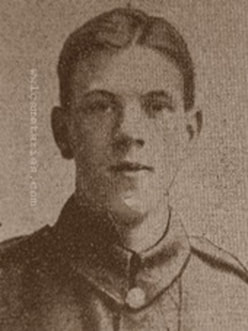
44534 Private
Fred Metcalfe
12th Bn. Manchester Regiment
Formerly 24703 East Lancashire Regiment
31st October 1916, aged 20.
Pier and Face 13 A and 14 C.
Son of George William and Mary E. Metcalfe, of 4, Norman St., Burnley
Fred Metcalfe
12th Bn. Manchester Regiment
Formerly 24703 East Lancashire Regiment
31st October 1916, aged 20.
Pier and Face 13 A and 14 C.
Son of George William and Mary E. Metcalfe, of 4, Norman St., Burnley

38675 Private
William (Harry) Henry Middleton
2nd Bn. King's Own Yorkshire Light Infantry
14th April 1917.
Pier and Face 11C and 12A.
Pictures courtesy of Josephine Cooper
William (Harry) Henry Middleton
2nd Bn. King's Own Yorkshire Light Infantry
14th April 1917.
Pier and Face 11C and 12A.
Pictures courtesy of Josephine Cooper
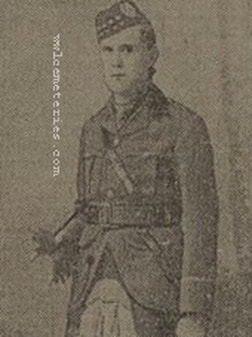
Second Lieutenant
Douglas Archibald Millar
11th Bn. attd. 1st Bn. Gordon Highlanders
18th July 1916, aged 23.
Pier and Face 15 B and 15 C.
Son of Mr. T. M. Millar, of "Glenvarloch," 6, Argyle St., Dundee.
Douglas Archibald Millar
11th Bn. attd. 1st Bn. Gordon Highlanders
18th July 1916, aged 23.
Pier and Face 15 B and 15 C.
Son of Mr. T. M. Millar, of "Glenvarloch," 6, Argyle St., Dundee.

20215 Private
William Millar
15th Bn. Cheshire Regiment
20th August 1916.
Pier and Face 3 C and 4 A.
Pte William James Millar, 20215, 15th Cheshire Regiment. Born 3rd February 1895, Hanna Street Belfast
Killed in action 20.8.16
Eldest son of Hugh and Matilda Millar (nee Mann)
Brother of Agnes, Sarah, Maggie and James
Husband of Jane (nee Robb) and father of Fred, born January 1915.
Picture and additional text provided by Elizabeth Clarke (Great Niece)
William Millar
15th Bn. Cheshire Regiment
20th August 1916.
Pier and Face 3 C and 4 A.
Pte William James Millar, 20215, 15th Cheshire Regiment. Born 3rd February 1895, Hanna Street Belfast
Killed in action 20.8.16
Eldest son of Hugh and Matilda Millar (nee Mann)
Brother of Agnes, Sarah, Maggie and James
Husband of Jane (nee Robb) and father of Fred, born January 1915.
Picture and additional text provided by Elizabeth Clarke (Great Niece)

18110 Private
Thomas Mitchell
1st Bn. East Lancashire Regiment
1st July 1916, aged 17.
Pier and Face 6 C.
Son of Thomas and Clara Mitchell, of 12, Mason St., Burnley.
Article from the Burnley Express Newspaper 1916.
News come on Saturday from the War Office that Lance Corporal Thomas Mitchell of the 1st Battalion, East Lancashire Regiment, eldest son of Mr and Mrs Mitchell of 12 Mason Street, Burnley was killed in action on July 1st. Lance Corporal Mitchell who was a formerly a weaver at Messrs Woodward's shed and later at Messrs Nuttals and Crook's shed was only 17 and a half years of age, but had done eighteen months in the Army. He was a big strong lad and had made his mark in the training, and it was chiefly due to his own keenness that he was sent to the front. At the time he went out Sergeant A. Grady wrote
" You must know by know that Tommy left for France to join the 1st Battalion. I must say he was a smart lad, and wanted so much to go, always saying it was about time he was out. Now he has gone, and one wishes him luck. He should have been made a full Corporal in a few weeks. There is a future for him I feel quite convinced".
Lance Corporal Mitchell was a member of the Nelson St. John's Boy Scouts, holding the position of Patrol Leader, and having won most of the badges offered by the scouts. He attended the St. Thomas Mission in Burnley. He stood 5ft 8 and a half inches in height. His Father served twelve years with the 3rd East Lancashire Regiment.
Thomas Mitchell
1st Bn. East Lancashire Regiment
1st July 1916, aged 17.
Pier and Face 6 C.
Son of Thomas and Clara Mitchell, of 12, Mason St., Burnley.
Article from the Burnley Express Newspaper 1916.
News come on Saturday from the War Office that Lance Corporal Thomas Mitchell of the 1st Battalion, East Lancashire Regiment, eldest son of Mr and Mrs Mitchell of 12 Mason Street, Burnley was killed in action on July 1st. Lance Corporal Mitchell who was a formerly a weaver at Messrs Woodward's shed and later at Messrs Nuttals and Crook's shed was only 17 and a half years of age, but had done eighteen months in the Army. He was a big strong lad and had made his mark in the training, and it was chiefly due to his own keenness that he was sent to the front. At the time he went out Sergeant A. Grady wrote
" You must know by know that Tommy left for France to join the 1st Battalion. I must say he was a smart lad, and wanted so much to go, always saying it was about time he was out. Now he has gone, and one wishes him luck. He should have been made a full Corporal in a few weeks. There is a future for him I feel quite convinced".
Lance Corporal Mitchell was a member of the Nelson St. John's Boy Scouts, holding the position of Patrol Leader, and having won most of the badges offered by the scouts. He attended the St. Thomas Mission in Burnley. He stood 5ft 8 and a half inches in height. His Father served twelve years with the 3rd East Lancashire Regiment.
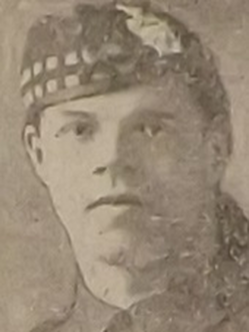
21842 Private
John George Moffatt
6th Bn. King's Own Scottish Borderers
7th July 1916, aged 23.
Pier and Face 4 A and 4 D.
Husband of Isabella Moffatt, of 35, Denton Crescent, Denton Holme, Carlisle.
Picture courtesy of Great niece, Glynis Tuke
John George Moffatt
6th Bn. King's Own Scottish Borderers
7th July 1916, aged 23.
Pier and Face 4 A and 4 D.
Husband of Isabella Moffatt, of 35, Denton Crescent, Denton Holme, Carlisle.
Picture courtesy of Great niece, Glynis Tuke
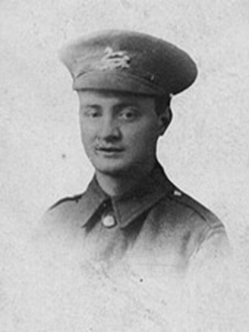
18061 Private
James Lambert Moorby
10th Bn. West Yorkshire Regiment
1st July 1916.
Pier and Face 2 A 2 C and 2 D.
Picture courtesy of Peter Hartley
James Lambert Moorby
10th Bn. West Yorkshire Regiment
1st July 1916.
Pier and Face 2 A 2 C and 2 D.
Picture courtesy of Peter Hartley

Second Lieutenant
Henry Moore
3rd Bn. attached to 2nd Bn. Welsh Regiment
15th July 1916, aged 35.
Pier and Face 7 A and 10 A.
The information below supplied by 'The Ellesmerian Club', the alumni organisation for Ellesmere College where Henry was a pupil.
Henry Moore
3rd Bn. attached to 2nd Bn. Welsh Regiment
15th July 1916, aged 35.
Pier and Face 7 A and 10 A.
The information below supplied by 'The Ellesmerian Club', the alumni organisation for Ellesmere College where Henry was a pupil.
Henry Moore joined the Common Room at Ellesmere College, north Shropshire as the Senior Classical Master at the start of the 1910-1911 academic year when there were only one hundred and thirty-eight pupils on the nominal roll. The future of the college hung in the balance for a few years.
Born in Ramelton, Donegal on 20th January 1881 to Henry, a land agent and farmer and his wife, Frances, he was the only son in the family with three sisters to keep him in order. He completed his further education at Trinity college, Dublin and achieved Second Class Honours in Classics, English and German Literature. His arrival at Ellesmere was noted in the Ellesmerian magazine but not mention is made of any previous appointments.
During his two year residency, Henry threw himself into college life. One of just nine members of the teaching staff he was initially appointed Master of the IVth Form, just prior to his departure he took on responsibility for those in Form Lower II. He enjoyed his sport and out on the football pitch it was noted that in one match Staff v. Boys the latter were prevented from scoring by the seemingly impenetrable defence of the goal maintained by Mr. Moore.
At the end of the summer term 1912 Henry took his leave of Ellesmere but did not move far as he took up his next post at Ruthin Grammar School. Here he was regarded as a splendid athlete and was greatly esteemed for his many good qualities.
Exactly when Henry enlisted is not known as very few of his military service records have not survived. This medal card shows that when he originally attested he was posted to the 7th battalion, the Leinster Regiment. This unit was raised in October 1914 at Fermoy and crossed to England just under a year later, undertaking their final pre-embarkation training at Blackdown. On 18th December 1915 the battalion proceeded to France landing at Le Havre. Henry, however, was not amongst them as earlier in the year he had been discharged to a commission. April 1915 saw him attend an Officer Cadet Battalion.
Having successfully completed his Officer training he was gazetted a 2nd Lieutenant, the Welsh Regiment on 1st July. He was posted initially posted to the 12th Battalion and landed in France on 2nd March 1916. Exactly where he saw active service is not known but, at the time of his death on 15th July 1916 he was in the 3rdbattalion (attached the 2nd battalion), the Welsh Regiment who took an active part in the Battle of the Somme with the capture of Mametz Wood being a specific target.
For his military service, Henry was awarded the British War Medal and the Victory Medal. Henry’s life is commemorated on memorials at Ruthin, Ellesmere College, Ruthin Grammar School and the Thiepval Memorial.
Born in Ramelton, Donegal on 20th January 1881 to Henry, a land agent and farmer and his wife, Frances, he was the only son in the family with three sisters to keep him in order. He completed his further education at Trinity college, Dublin and achieved Second Class Honours in Classics, English and German Literature. His arrival at Ellesmere was noted in the Ellesmerian magazine but not mention is made of any previous appointments.
During his two year residency, Henry threw himself into college life. One of just nine members of the teaching staff he was initially appointed Master of the IVth Form, just prior to his departure he took on responsibility for those in Form Lower II. He enjoyed his sport and out on the football pitch it was noted that in one match Staff v. Boys the latter were prevented from scoring by the seemingly impenetrable defence of the goal maintained by Mr. Moore.
At the end of the summer term 1912 Henry took his leave of Ellesmere but did not move far as he took up his next post at Ruthin Grammar School. Here he was regarded as a splendid athlete and was greatly esteemed for his many good qualities.
Exactly when Henry enlisted is not known as very few of his military service records have not survived. This medal card shows that when he originally attested he was posted to the 7th battalion, the Leinster Regiment. This unit was raised in October 1914 at Fermoy and crossed to England just under a year later, undertaking their final pre-embarkation training at Blackdown. On 18th December 1915 the battalion proceeded to France landing at Le Havre. Henry, however, was not amongst them as earlier in the year he had been discharged to a commission. April 1915 saw him attend an Officer Cadet Battalion.
Having successfully completed his Officer training he was gazetted a 2nd Lieutenant, the Welsh Regiment on 1st July. He was posted initially posted to the 12th Battalion and landed in France on 2nd March 1916. Exactly where he saw active service is not known but, at the time of his death on 15th July 1916 he was in the 3rdbattalion (attached the 2nd battalion), the Welsh Regiment who took an active part in the Battle of the Somme with the capture of Mametz Wood being a specific target.
For his military service, Henry was awarded the British War Medal and the Victory Medal. Henry’s life is commemorated on memorials at Ruthin, Ellesmere College, Ruthin Grammar School and the Thiepval Memorial.

27391 Private
John Robert Moran
15th Bn. Lancashire Fusiliers
1st July 1916, aged 31.
Pier and Face 3 C and 3 D.
Husband of Elizabeth Alice Moran, of 45, Craven St., Hightown, Manchester.
John Robert Moran
15th Bn. Lancashire Fusiliers
1st July 1916, aged 31.
Pier and Face 3 C and 3 D.
Husband of Elizabeth Alice Moran, of 45, Craven St., Hightown, Manchester.

S/1802 Private
Alexander Morrison
7th Bn. Seaforth Highlanders
14th July 1916.
Pier and Face 15 C.
Alexander Morrison
7th Bn. Seaforth Highlanders
14th July 1916.
Pier and Face 15 C.

15902 Private
John Murphy
11th Bn. East Lancashire Regiment
1st July 1916, aged 24.
Pier and Face 6 C.
Lived at 102 Anne Street, Burnley, Lancashire.
Son of Edward and Anne Murphy, of 62, Olympia St., Burnley.
John Murphy
11th Bn. East Lancashire Regiment
1st July 1916, aged 24.
Pier and Face 6 C.
Lived at 102 Anne Street, Burnley, Lancashire.
Son of Edward and Anne Murphy, of 62, Olympia St., Burnley.


